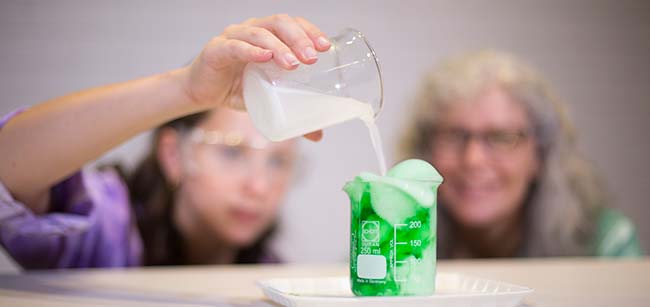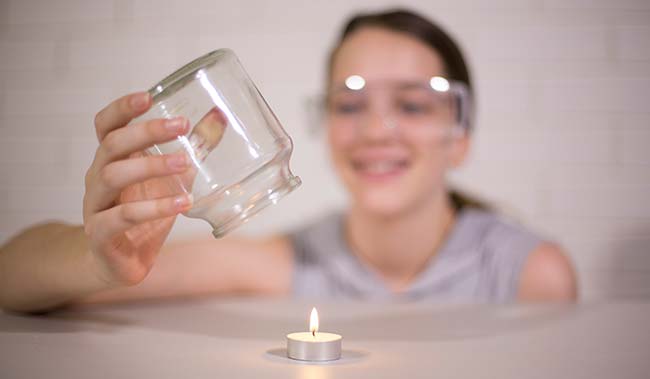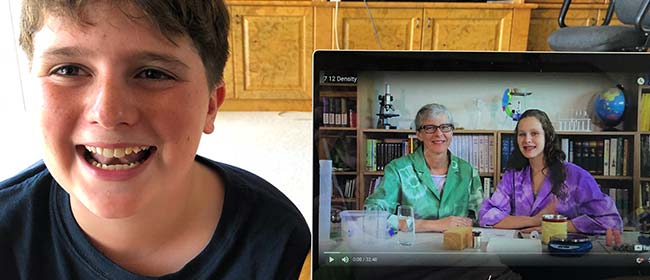How It Works
Our lessons are designed to be easy to follow, fun, interesting and will make your child want to learn science.

Preparing for the Year
- Have a file to keep all your worksheets and notes in order. Print out the title page and a few pieces of graph paper. Keep some lined paper in the file for writing extra things.
- Students will gain a deeper understanding of the topics by reading extra material. Whilst this is not essential, we highly recommend it for capable readers. There are many text books written that cover the Australian Curriculum and will follow similar topics as the videos do. We recommend Pearson Science Student Book, Science Quest or Oxford Big Ideas, all of which can be ordered through Fishpond, Booktopia or other major book suppliers. Just be sure to order the text book and NOT the activity or work book.
- Go to the first topic on the website, print out the outline and the equipment list. Place the outline it in a plastic sleeve in the file. This then acts as a file divider, is easy to refer to if you want to know what is being covered and your moderator will be very pleased to have the content and links to the Australian Curriculum so clearly displayed.
- Go through the list of equipment required for each of the experiments for the topic and see what you do not have in the house. Shop for what you need, so that you have it ready when the lesson is reached. Most equipment will be found around the house but a microscope and two thermometers are very helpful and can be ordered through us if you do not have any. There is other equipment you can also order, but is not essential to being able to do the experiments.
- Make a time each week to watch the video and do the experiment. Allow 90 minutes to do it all. Maybe find a homeschooling friend to do the experiments with. It is often a lot more fun with someone else and the discussions that take place can enhance learning.

Doing a lesson
- Print out the worksheet for the first lesson and have your child fill in the blanks as they watch the video. The words that need to be filled in will be shown on the screen and the video can be paused to provide time to write it in, if needed.
- Undertake the experiment (take a few photos) and record your own results. This is really important. Some students may be tempted to just watch us do the experiment, but they will not learn as much. Sometimes there is more than one experiment included. It is not essential to do every experiment, but it can be fun if you have time.
- Sometimes we ask that an experiment be written up and the results graphed. For students who struggle to write, it is up to the parent to decide how much of this to expect, but for able students, it is an important part of science, even if not the most fun. Extra time may need to be allocated to complete this.
- Have the student read the solutions provided on-line or, even better, go through the solutions with the student to see how they went with any parts that were not obvious and have them correct their work so that their worksheets are correctly filled out.
- Place the worksheet and any extra paper that was used into the file to keep a record of all that is done and to show the moderator.
- Post some photos of the fun you had doing the experiments on our Facebook page so we can all encourage one another on our homeschooling journey.

Completing a topic
- Print out a certificate to present to your child. It is a great achievement to complete a topic and should be celebrated! The certificate may be filed in a plastic sleeve to mark the end of the topic.
- Move on to the next topic. It is best to study the topics in the order they are presented on the website. The topics have been prepared progressively and some concepts are introduced in earlier videos and are then built upon in later ones, even though they may be in a different area of science. There is a lot of overlap between the different disciplines of science and, for example, what students learnt in chemistry may be assumed to be understood when a physics lesson is presented. It is important that the Scientific Inquiry topic be covered first, as this is built upon in all the other topics.

